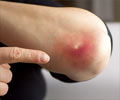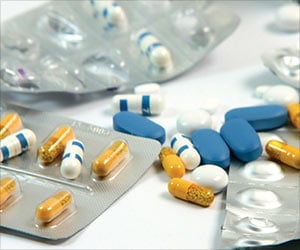Amount of antibiotics in certain world's rivers exceed 'safe' levels by around 300 times, according to a new study.

‘Antibiotic contamination of river is an important factor responsible for the development of resistance which could be addressed by proper waste water management,strict regulations and cleaning of contaminated sites.’
Read More..




In the River Thames and one of its tributaries in London, the researchers detected a maximum total antibiotic concentration of 233 nanograms per litre (ng/l), whereas in Bangladesh the concentration was 170 times higher. Read More..
The most prevalent antibiotic was trimethoprim, which was detected at 307 of the 711 sites tested and is primarily used to treat urinary tract infections.
The research team compared the monitoring data with 'safe' levels recently established by the AMR Industry Alliance which, depending on the antibiotic, range from 20-32,000 ng/l.
Ciproflaxacin, which is used to treat a number of bacterial infections, was the compound that most frequently exceeded safe levels, surpassing the safety threshold in 51 places.
The team said that the 'safe' limits were most frequently exceeded in Asia and Africa, but sites in Europe, North America and South America also had levels of concern showing that antibiotic contamination was a "global problem."
Advertisement
The study revealed that high-risk sites were typically adjacent to wastewater treatment systems, waste or sewage dumps and in some areas of political turmoil, including the Israeli and Palestinian border.
Advertisement
Samples were then frozen and couriered back to the University of York for testing. Some of the world's most iconic rivers were sampled, including the Chao Phraya, Danube, Mekong, Seine, Thames, Tiber and Tigris.
Dr John Wilkinson, from the Department of Environment and Geography, who co-ordinated the monitoring work said no other study had been done on this scale.
He said: "Until now, the majority of environmental monitoring work for antibiotics has been done in Europe, N. America and China. Often on only a handful of antibiotics. We know very little about the scale of problem globally.
"Our study helps fill this key knowledge gap with data being generated for countries that had never been monitored before."
Professor Alistair Boxall, Theme Leader of the York Environmental Sustainability Institute, said: "The results are quite eye opening and worrying, demonstrating the widespread contamination of river systems around the world with antibiotic compounds.
"Many scientists and policy makers now recognise the role of the natural environment in the antimicrobial resistance problem. Our data show that antibiotic contamination of rivers could be an important contributor."
"Solving the problem is going to be a mammoth challenge and will need investment in infrastructure for waste and wastewater treatment, tighter regulation and the cleaning up of already contaminated sites."
The finds are due to be unveiled during two presentations at the annual meeting of the Society of Environmental Toxicology and Chemistry (SETAC) in Helsinki on 27 and 28 May.
Source-Eurekalert












